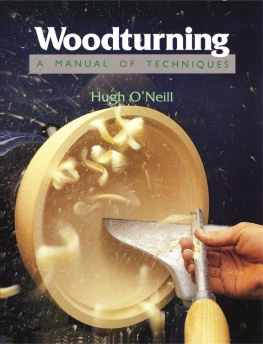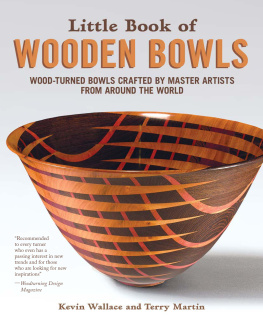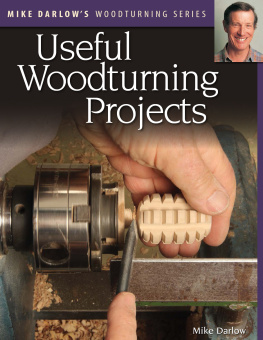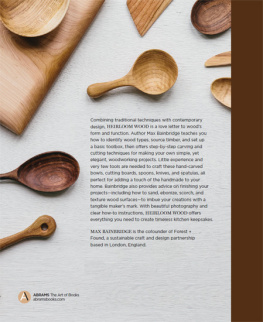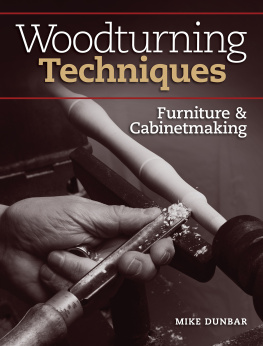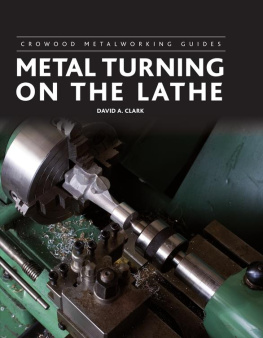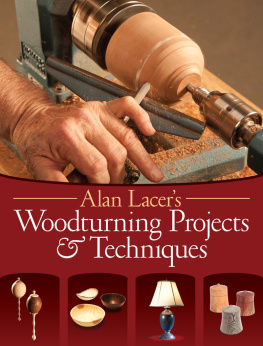Hugh ONeill - Woodturning
Here you can read online Hugh ONeill - Woodturning full text of the book (entire story) in english for free. Download pdf and epub, get meaning, cover and reviews about this ebook. year: 2014, publisher: Not Avail, genre: Children. Description of the work, (preface) as well as reviews are available. Best literature library LitArk.com created for fans of good reading and offers a wide selection of genres:
Romance novel
Science fiction
Adventure
Detective
Science
History
Home and family
Prose
Art
Politics
Computer
Non-fiction
Religion
Business
Children
Humor
Choose a favorite category and find really read worthwhile books. Enjoy immersion in the world of imagination, feel the emotions of the characters or learn something new for yourself, make an fascinating discovery.
- Book:Woodturning
- Author:
- Publisher:Not Avail
- Genre:
- Year:2014
- Rating:4 / 5
- Favourites:Add to favourites
- Your mark:
- 80
- 1
- 2
- 3
- 4
- 5
Woodturning: summary, description and annotation
We offer to read an annotation, description, summary or preface (depends on what the author of the book "Woodturning" wrote himself). If you haven't found the necessary information about the book — write in the comments, we will try to find it.
Woodturning — read online for free the complete book (whole text) full work
Below is the text of the book, divided by pages. System saving the place of the last page read, allows you to conveniently read the book "Woodturning" online for free, without having to search again every time where you left off. Put a bookmark, and you can go to the page where you finished reading at any time.
Font size:
Interval:
Bookmark:
First published in 1989 by
The Crowood Press Ltd
Ramsbury, Marlborough
Wiltshire SN8 2HR
www.crowood.com
This e-book first published in 2013
Paperback edition 1992
This Impression 2010
Hugh ONeill 1989
All rights reserved. No part of this publication may be reproduced or transmitted in any form or by any means, electronic or mechanical, including photocopy, recording, or any information storage and retrieval system, without permission in writing from the publishers.
British Library Cataloguing-in-Publication Data
A catalogue record for this book is available from the British Library.
ISBN 978 1 84797 671 0
Dedication
To the Committee and members of the Association of Woodturners of Great Britain for their help, guidance and friendship.
Line-drawings by Terry Hunns
Photographs by Kevin ONeill, Craft Supplies Ltd, and the author
If you are reading this book in bed, in those few quiet moments before sleep permeates the consciousness, then dont bother. Put the book down, go to sleep and dream of woodturning. You may learn more about the subject that way!
This book is not intended for just dipping into, nor is it for sitting down to and reading from cover to cover, I first had the idea of writing it some years ago when I did a review of some of the two-day woodtuming courses that are offered in many parts of the country. Leaving apart the fact that some were good and a few were very poor, they all left me with one clear message. You are shown, and indeed try, many things over the two days. You return to your own workshop and try to put into practice some of the things you have learned. Initially you focus upon your own favourite form it may be bowls, spindles or whatever. A week later you can really only remember about ten per cent of what you were taught. You have a vague idea about another twenty per cent of the basics, but can recall virtually nothing of the finer points that your instructor had passed on to you.
I thought then that what would be useful would be a book which first covers in detail the same ground as the courses, and then goes on into some of the more difficult things that you later have to work out for yourself like turning natural edge work, equipping a workshop, thinking about design and so on. This book is intended as an adjunct to a short course, not a replacement for one. Equally I knew that beyond describing skills and recording the wrinkles, a little theory might show why we do things the way that we do. This would provide the sort of foundation upon which we all build technique and develop our own unique style. This is what I aim to do in this book.
The book has also been given a what happens next? flavour. Once you have the basic course under your belt and can utilise most of the skills demonstrated, you will want to start to move forward. You are not an expert, nor are you quite ready for the expert advice presented on some of the major seminars.
You want to try some of the more difficult techniques like wet turning, natural edge pieces, and maybe hollow spheres. You wish to extend your knowledge of woods and how to use the materials that you can find without always having to go to the timber yard. So I have tried to fill the gap that occurs in the two or three years after the course.
Obviously the book will contain a lot of insights into what I do and the mistakes that I make. Hopefully, however, this is not a book about my way. Where appropriate, and where known, I have referred to what other (and far more expert) turners do. Although some turners will try to tell you that this is the right way! you only have to look at the variety of approaches followed and the ideas expounded by different master turners to know that there is no one way. It is what best suits you that really matters.
Over the years I have set myself up for criticism. It was in the Woodworker magazine that I first said that you can not learn woodturning from a book. I also said that photographs are usually a poor way of illustrating the skills of turning. So why are there photographs here? I have used sketches where they are needed and only used photographs where they do clearly illustrate a point. I still maintain that you can not learn turning from a book. We learn skills by doing and then letting the lessons permeate our subconscious.
Throughout the book there are exercises these are meant to be tried as and when you read about them not tomorrow or at the week-end when you are in the shed. You learn turning by getting hands-on experience. The structure of the earlier parts of the book are based upon the idea of read a piece, then make a piece.
Some may be surprised that the book does not start by looking at lathes. In fact I have put the chapter on choosing a lathe towards the end. I believe that the biggest mistake that you can make is to buy a lathe too soon. Such a purchase should not be considered until after you have done some turning.
You cannot know what to look for until you have tried various machines, and you can easily end up making an expensive mistake. Even more to the point, you cannot choose a suitable lathe until you know what sort of turning you are going to focus upon and this will only crystallise after you have done some turning and tried various styles.
I started with a lathe attachment for a Black and Decker drill. It was given to me by a friend whose fence I had repaired (and I owe the lady in question a life-long debt of gratitude). As a lathe it was a good start because it was so bad! It very quickly showed me some of the things to avoid in my next lathe. It also became a challenge, presenting a never ending range of problems to be overcome. My second lathe, an Elu DB 180 was also not a deliberate choice made after careful consideration, but an unexpected bargain that I was offered. Despite its several faults and inadequacies, it soon paid for itself. It also showed me precisely what I wanted in my third lathe.
Now I use a massive old Wadkin RS which is marvellous, and it is supported by a Multico which was cheap and cheerful. Neither are perfect perfection in lathes does not exist everything is a compromise. Neither are they necessarily likely to suit you, your needs will probably be very different to mine, but they do suit me at the moment! However, I already have plans for my next two!
So to get started beg, borrow, hire, or rent time on someone elses lathe. Go on a short course to a centre where you can try several lathes. Try the exercises in this book on a friends lathe. Then sit back and think. Only then should you consider purchasing your own.
I have written this book with another theme in mind. I was a beginner when I first put a carpentry chisel to wood forty-nine years ago at school. I was a beginner when I went on the two-day courses, I am a beginner now and I will be a beginner the next time I go into my workshop and on every occasion after that. I know that I will always have things to learn, ideas to try out, mistakes to make, and new skills to develop. Sometimes I put to one side all the short-cuts that I have been shown, and start again from basic principles; this way I unlearn some of the bad habits which come with familiarity. So this book is for beginners novice beginners, five years experienced beginners; even, hopefully, a few hoary old pro-beginners.
Perhaps my biggest learning experience in recent times has been the writing of this book. It has made me think through what I do, and analyse all the whys and wherefores of every bit of technique that I use. Some aspects did not stand up to the examination clearly they were bad habits that had crept in and become firmly established. So to every reader I have to say, Thank you! Thank you for making me a better turner.
Font size:
Interval:
Bookmark:
Similar books «Woodturning»
Look at similar books to Woodturning. We have selected literature similar in name and meaning in the hope of providing readers with more options to find new, interesting, not yet read works.
Discussion, reviews of the book Woodturning and just readers' own opinions. Leave your comments, write what you think about the work, its meaning or the main characters. Specify what exactly you liked and what you didn't like, and why you think so.

